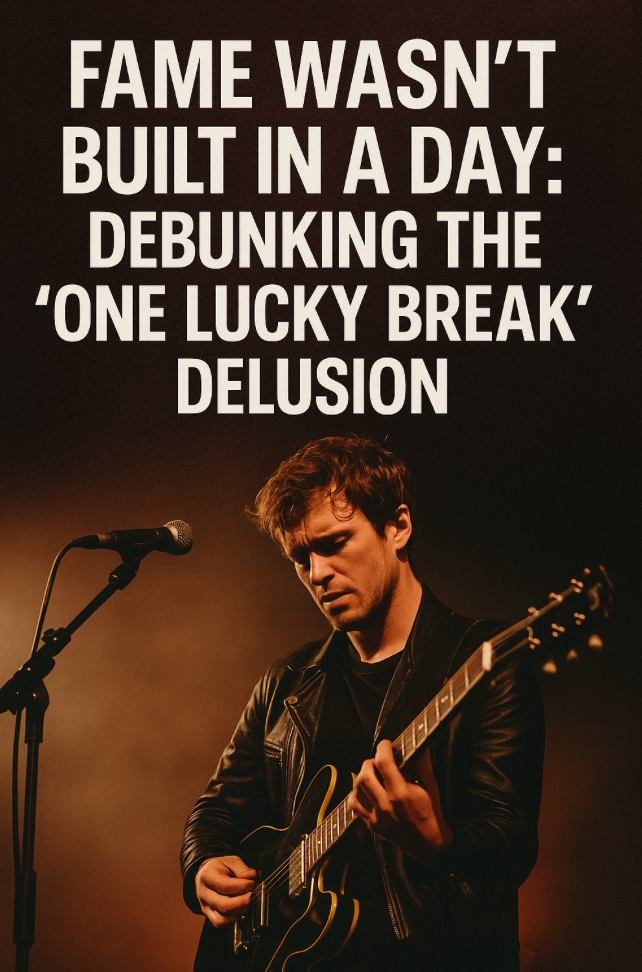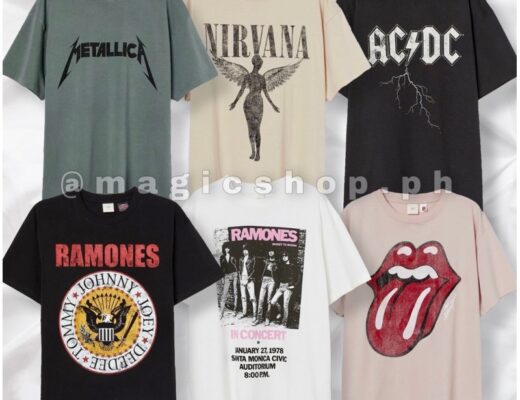The notion that a single lightning-strike moment can catapult a musician from obscurity to international stardom has been so deeply woven into the cultural fabric of the music industry that to question it is to come across as a cynic or a killjoy. Yet for all its seductive shine, the myth of the “one lucky break” is precisely that — a myth. It is fed to us through well-meaning industry veterans, romanticised biopics, and social media posts that strip all the toil out of triumph. It’s an easier story to digest: some lucky sod just had it. But when you strip away the narrative packaging from even the most fabled rags-to-riches journeys, you’ll usually find years of grind, dozens of near-misses, and a heap of calculated compromises along the way. And for every one artist who seems to break overnight, there are thousands screaming into the void, wondering why their best track didn’t get the algorithmic nod.
This blog isn’t about crushing dreams. It’s about refusing to feed the machine that leads talented artists to believe they’ve failed if they haven’t been ‘discovered’ yet. It’s about pulling back the curtain on what chasing viral moments really costs. And it’s about reclaiming power through persistence, not passivity.
1. The Overnight Success Story Has a Decade of Sleepless Nights Behind It
Let’s not rewrite history with the rose-tinted biro of the press machine. Bands like Arctic Monkeys didn’t emerge fully formed from the smoke of a Sheffield pub and stumble straight into chart domination because of MySpace. The groundwork was laid for years — bedroom demos, relentless gigging, grassroots word of mouth, the kind of self-sufficiency that only comes when you know no one’s coming to save you.
Even the most glossy pop machines are quietly powered by years of training, ghostwriting, and image development. Adele was forged in the crucible of BRIT School discipline before she was ever handed a mic on a major stage. Billie Eilish’s ascension wasn’t an algorithmic miracle, it was the result of smart marketing, DIY ethos, and a family-run mini-empire that knew exactly how to work the angles.
These stories get reframed because they’re more palatable without the struggle. The industry wants to sell a dream that’s accessible to anyone — it’s how platforms keep users hopeful. But the truth is, you can have the best voice on earth and still struggle to sell out your local pub unless you put in consistent legwork and cultivate networks that open doors long before any spotlight swings your way.
2. Talent Isn’t Enough. It Never Has Been.
The idea that true talent will always rise is just another hangover from the same fantasy. It’s comforting, sure, to believe that brilliance will be recognised without effort. But this delusion stunts the growth of musicians who take a few knocks and assume they’re simply not good enough. That’s not failure; that’s the industry functioning exactly as it’s always done: as a gate-kept labyrinth riddled with taste politics, social leverage, and marketing budgets.
You can scream your heart out with perfect pitch, write lyrics that would bring Cohen to tears, and still not land a feature on a Spotify playlist; not because you’re lacking artistry, but because those platforms don’t reward raw quality. They reward stickiness. Data. Visibility. It’s why TikTokers with backing tracks get label deals, and lifelong musicians with razor-sharp technical chops struggle to keep the lights on.
This is not to dismiss the existence of raw talent. But without discipline, timing, and the hustle to get it in front of the right eyes and ears, it means nothing in a marketplace that’s more concerned with metrics than musicianship. The best artists often aren’t the ones with the loudest buzz. They’re the ones still on the sidelines, grafting for visibility while algorithmic flukes decide their fate.
3. Virality Is a Sugar Rush, Not a Meal Plan
The cult of virality has only intensified the problem. Artists now chase the perfect soundbite instead of building the kind of catalogue that can support a career. One well-placed sync, one social media bump, one influencer lip-sync, and suddenly the track is everywhere—until it isn’t.
Kate Nash’s journey is one of the most stark and honest portrayals of what this rapid rise can look like. In her documentary Underestimate the Girl, the façade crumbles. After a chart-topping hit and a massive debut, she found herself discarded when she failed to recreate the same commercial success. Her career was reduced to soundbites and tabloid fodder, and despite immense talent and a fiercely loyal fanbase, she had to fight her way back from irrelevance — alone, and publicly.
The post-viral drip is rarely discussed. The burnout. The loss of identity. The pressure to perform for a version of yourself you never meant to become. Artists who go viral aren’t made. They’re momentarily minted, often without the infrastructure to weather what happens next. And once the likes stop rolling in, many are left with nothing but impostor syndrome and a rapidly closing window of opportunity.
4. The Industry Rewards Persistence More Than it Rewards Genius
If there’s one universal truth in music, it’s this: the ones who make it are the ones who keep showing up. It’s not a question of raw talent. It’s whether you’re still willing to be in the room when luck finally decides to swing your way. Longevity rarely comes from a single shot in the dark; it’s built across dozens of smaller breaks, half-opportunities, and near misses.
DIY artists who’ve kept plugging away — whether they’re running their own PR, booking their own tours, or building micro-communities across Bandcamp and Discord — have far more chance of building something sustainable than those waiting for a viral miracle. There’s a quiet power in owning your grind. When you accept that no one’s coming to hand you your moment, you stop waiting and start building.
In a culture obsessed with instant results and perfect optics, there’s freedom in refusing to play the game by its rules. Real artists carve their own routes through the noise. Sometimes it’s slow. Sometimes it feels thankless. But it builds careers that can actually weather the seasons instead of flaming out in a single summer.
Conclusion: Don’t Wait to Be Picked — Pick Yourself
There’s a brutal honesty in facing the reality that music doesn’t owe anyone a break. But there’s also a strange sort of peace in it. Once you stop clinging to the myth of sudden discovery, you can finally get to the real work — the late nights, the small wins, the creative evolution that no algorithm can replicate.
Your artistry doesn’t need a viral co-sign to matter. Your value isn’t defined by playlist placements or label interest. It’s defined by your consistency, your growth, and your refusal to vanish when the buzz dies down.
Keep writing. Keep playing. Keep pushing. Not because it guarantees success, but because it guarantees you. The real you, not the sanitised version the industry might one day decide to shine a light on. Because when that light inevitably fades, it’s your resilience that’ll carry you, not your lucky break.
Article by Amelia Vandergast




No Comments